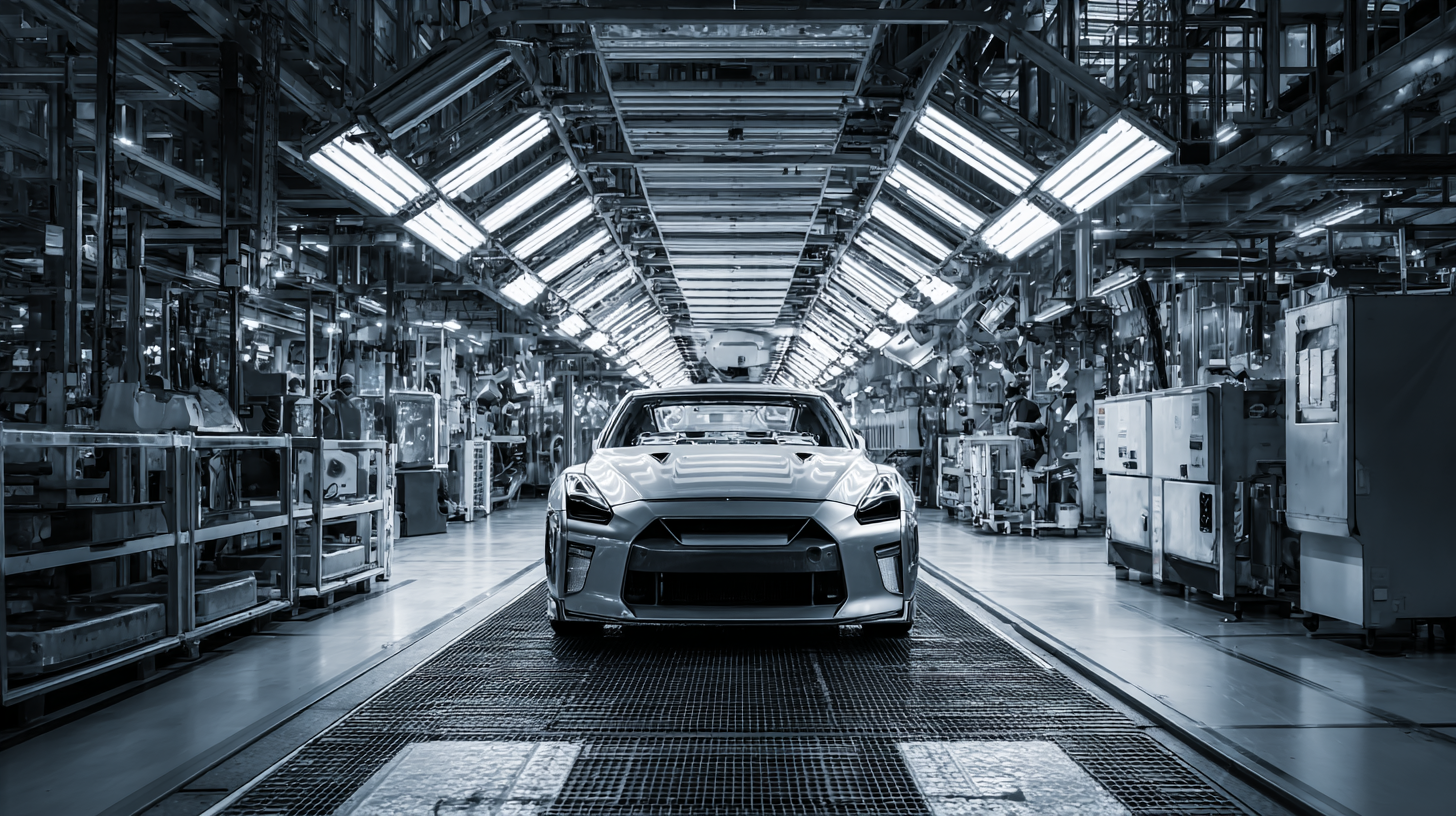As the automotive industry continues to evolve, the significance of Automotive Injection Molding is becoming increasingly pronounced, especially as we approach the trends predicted for 2025. According to a report by MarketsandMarkets, the global automotive injection molding market is projected to reach a value of $37.58 billion by 2025, with a compound annual growth rate (CAGR) of 5.5%. This growth is driven by the rising demand for lightweight materials and the ongoing push for more fuel-efficient vehicles. Moreover, with the expanding focus on electric vehicles (EVs) and smart automotive technologies, manufacturers must adapt their molding processes to stay competitive. Navigating the complexities of industry import and export certifications, particularly in regions with stringent regulatory standards, becomes essential for leveraging these trends. In this blog, we will explore how automakers and suppliers can effectively position themselves to capitalize on the imminent shifts in the automotive injection molding landscape.

As we approach 2025, the automotive industry is poised for transformative changes driven by advancements in injection molding technologies. One key trend is the increasing emphasis on lightweight materials, which can significantly enhance fuel efficiency and overall vehicle performance. Manufacturers are increasingly adopting advanced polymers and composites in their injection molding processes, allowing for the production of complex parts that meet stringent automotive standards while reducing weight.

Another notable trend is the integration of smart manufacturing technologies into injection molding operations. Industry 4.0 concepts are taking hold, with automation, data analytics, and IoT becoming integral to the manufacturing process. These technologies not only improve production efficiency but also enhance quality control, enabling companies to respond quickly to market demands.
As automotive companies navigate these trends in injection molding, they will need to embrace innovative solutions to maintain a competitive advantage in an evolving marketplace. The focus on sustainability will further drive the adoption of eco-friendly practices, positioning businesses for long-term success in the automotive sector.
The rise of lightweight materials is transforming the landscape of automotive injection molding, significantly enhancing manufacturing efficiency. According to a recent report by the MarketsandMarkets research team, the global automotive lightweight materials market is projected to reach $170 billion by 2025, driven by the increasing demand for fuel-efficient vehicles. Lightweight materials, such as advanced composites and high-strength steels, not only reduce the weight of vehicles but also improve their overall performance, resulting in shorter cycle times and less energy consumption during the injection molding process.
The efficiency of injection molding processes is particularly impacted by the integration of these materials, as they allow for more precise mold designs that cater to complex geometries. Furthermore, a study from the Society of Automotive Engineers indicates that using lightweight materials can lead to a reduction of up to 20% in cycle times for specific parts. This efficiency gain translates into enhanced productivity, allowing manufacturers to meet the growing demands of the automotive market while also adhering to stricter environmental standards. Embracing these trends will enable companies to secure a competitive edge in an ever-evolving industry.
| Material Type | Density (g/cm³) | Tensile Strength (MPa) | Impact Resistance (kJ/m²) | Molding Cycle Time (s) | Cost (USD/kg) |
|---|---|---|---|---|---|
| Polypropylene (PP) | 0.90 | 30 | 15 | 30 | 1.20 |
| Polycarbonate (PC) | 1.20 | 65 | 20 | 50 | 2.50 |
| Acrylonitrile Butadiene Styrene (ABS) | 1.05 | 45 | 18 | 40 | 1.80 |
| Nylon (PA) | 1.14 | 80 | 30 | 45 | 2.00 |
| Thermoplastic Elastomer (TPE) | 0.87 | 25 | 25 | 35 | 3.00 |
In the automotive industry, the integration of advanced technology is revolutionizing product design and production processes. These innovations not only enhance efficiency but also significantly improve the quality of automotive injection molding. Utilizing computer-aided design (CAD) software, manufacturers can create highly detailed prototypes that allow for precise adjustments before committing to mass production. This level of detail minimizes waste and reduces the time needed for product development.
Tip: Embrace 3D printing technologies to rapidly prototype and test new designs. This approach not only shortens the development cycle but also provides valuable insights into potential design flaws early on, ensuring a smoother transition to production.
Another key advancement is the implementation of automation and robotics in manufacturing. Automated systems can execute repetitive tasks with high precision and speed, leading to reduced production costs and improved consistency in final products. By analyzing data generated through machine learning, companies can also optimize their workflows, anticipating issues before they arise and streamlining the entire operation.
Tip: Invest in smart manufacturing technologies that utilize the Internet of Things (IoT). These systems can monitor production in real-time, providing actionable data that enhances decision-making and fosters continuous improvement in manufacturing processes.

As the automotive industry shifts towards more sustainable practices, the demand for eco-friendly injection molding solutions is on the rise. The anticipated growth of the global composite materials market, projected to increase from $88.98 billion in 2024 to $162.66 billion by 2032, underscores this trend. This growth, with an impressive CAGR of 7.8%, reflects a broader movement towards materials that minimize environmental impact while maintaining performance. Key players in the automotive sector must evaluate these market dynamics to leverage sustainable practices for competitive advantage.
Participation in events such as the 2024 China International Plastics and Rubber Industry Exhibition, scheduled for April, will be crucial for industry stakeholders. This exhibition will showcase innovations in injection molding technologies, attracting over 4,400 exhibitors from more than 150 countries. By engaging with these advancements, automotive manufacturers can identify sustainable solutions that not only comply with evolving regulations but also appeal to a more environmentally conscious consumer base. Embracing sustainable injection molding practices can position companies at the forefront of the market, facilitating both growth and longevity in a competitive landscape.
In the rapidly evolving automotive industry, selecting the most cost-effective injection molding technique can significantly impact production efficiency and profitability. A thorough comparison of various methods reveals that traditional injection molding often remains a reliable choice for high-volume production due to its established processes and economies of scale. However, advancements in technologies like multi-material and 3D printing injection molding offer innovative solutions that can reduce waste and enhance design flexibility.
Tip: When considering injection molding options, conduct a detailed cost analysis that includes material expenses, cycle times, and maintenance costs. This will help identify the most economical choice for your specific automotive application.
Additionally, blending sustainability with cost efficiency is becoming essential in automotive manufacturing. Techniques such as bioplastic injection molding not only cater to environmental concerns but can also lower long-term costs associated with waste disposal and regulatory compliance. As vehicle manufacturers strive to meet stringent eco-friendly standards, integrating such methods can provide both competitive and ethical advantages.
Tip: Stay updated with industry trends and advancements to identify which innovative techniques can fit your production needs and budget. This proactive approach ensures that your automotive manufacturing stays ahead of the competition while optimizing costs.
